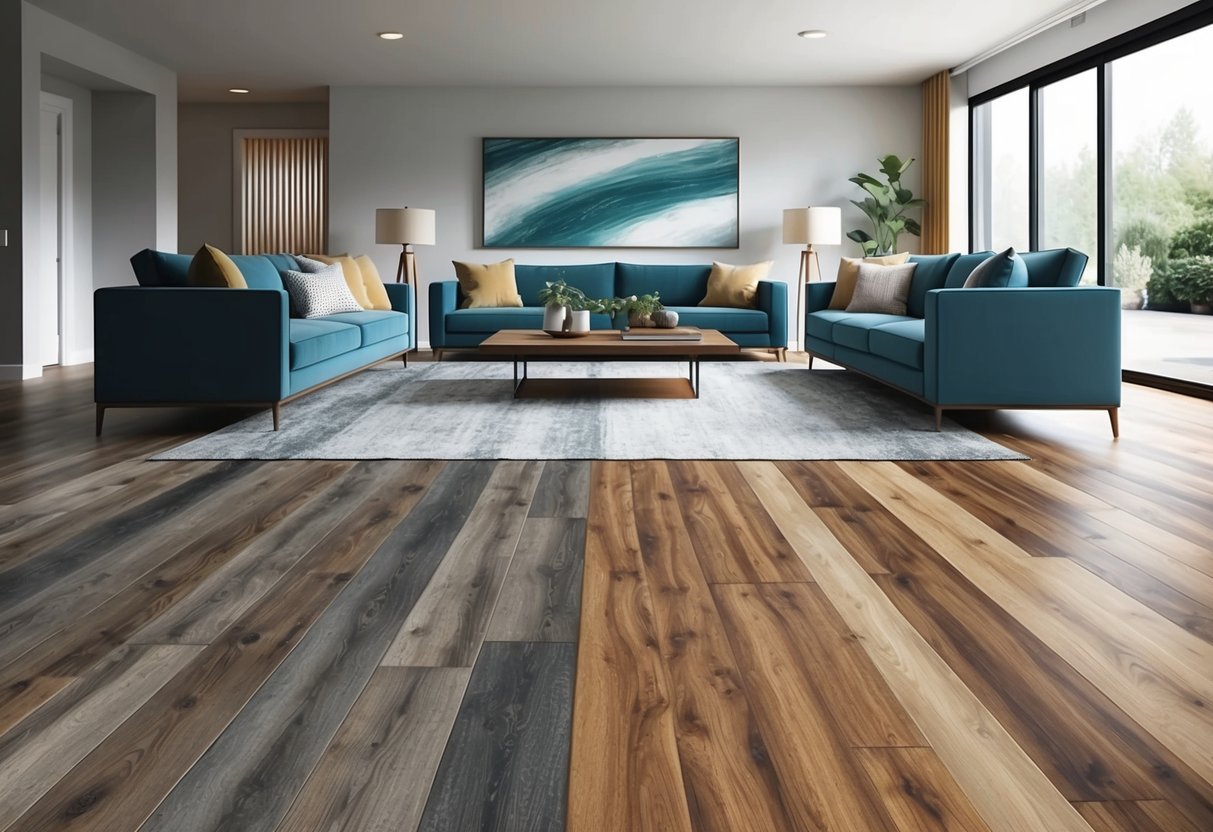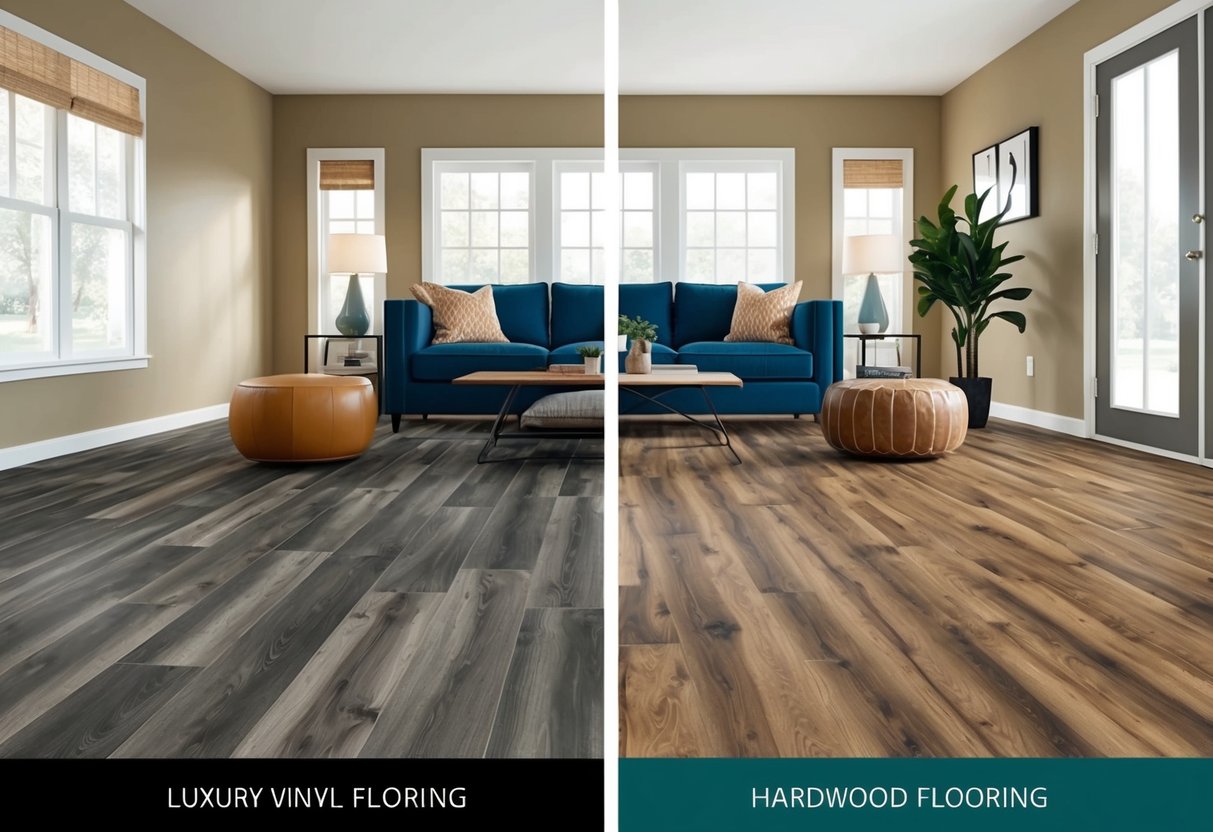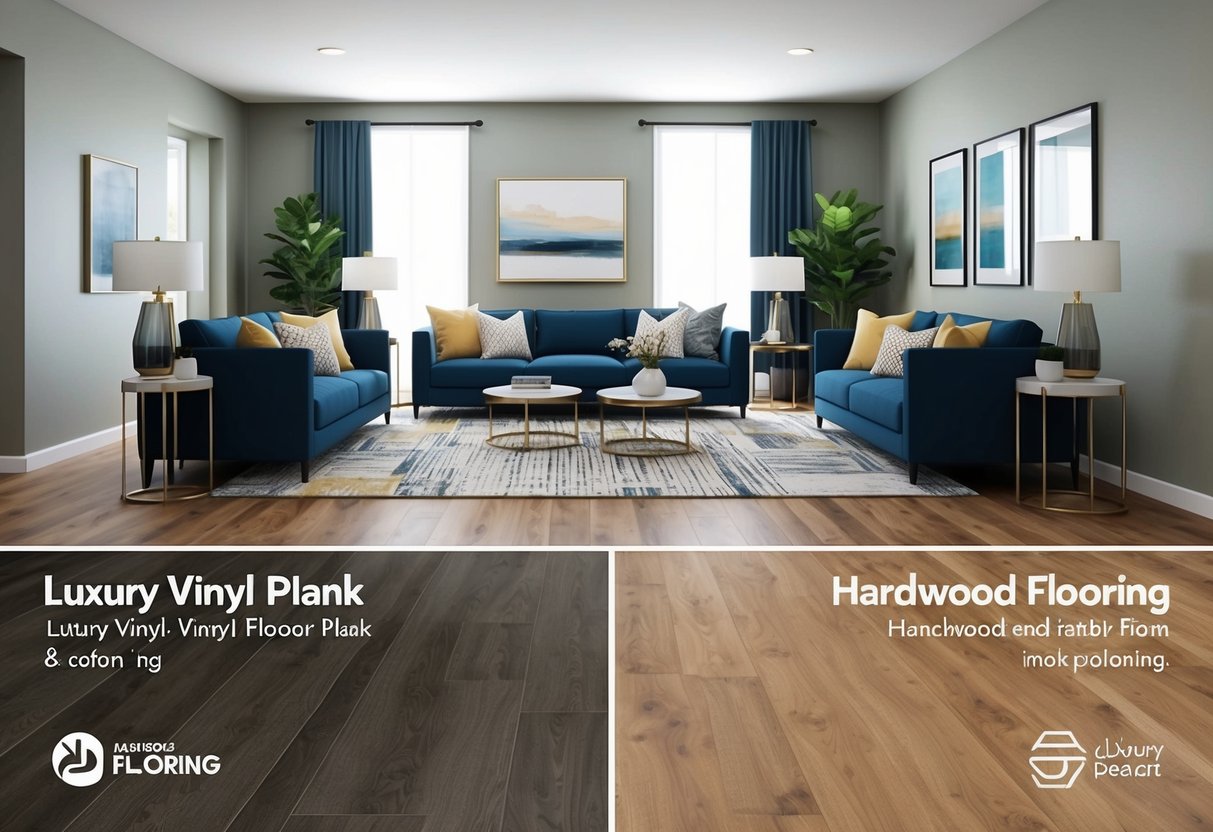
Choosing between luxury vinyl plank flooring and traditional hardwood is a common decision for homeowners focused on home upgrades and long-term value. Luxury vinyl plank offers water resistance, durability, and lower maintenance, while hardwood floors bring a classic natural aesthetic and proven value over time.
Understanding the pros and cons of each flooring option can help determine which best fits your household’s needs.
Luxury vinyl plank, known for its versatility and resilience, excels in high-traffic and moisture-prone spaces like basements and kitchens. Hardwood flooring, on the other hand, is often preferred for living areas and bedrooms due to its timeless look and ability to increase resale value.
Homeowners should consider lifestyle, budget, and design preferences when weighing hardwood flooring versus luxury vinyl plank. With innovations in flooring technology, both options now offer a variety of styles, textures, and installation methods.
Comparing luxury vinyl plank to hardwood flooring reveals key differences in maintenance, durability, and installation, helping homeowners make an informed choice for their unique spaces.
Overview of Luxury Vinyl Plank and Hardwood Flooring

Luxury vinyl plank (LVP) and hardwood flooring are two popular choices for homeowners seeking durability, visual appeal, and long-term value. Each offers distinct benefits in terms of appearance, performance, and installation versatility, making them suited for different lifestyles and budgets.
Defining Luxury Vinyl Plank
Luxury vinyl plank, also called LVP or luxury vinyl flooring, is a multilayer synthetic flooring material designed to mimic the appearance of hardwood. It features a realistic photographic layer, a durable wear layer, and a flexible yet sturdy core.
The result is a floor that looks like natural wood but offers improved resistance to moisture and scratches. One of the primary reasons homeowners choose LVP is its water-resistant properties, making it suitable for kitchens, bathrooms, laundry rooms, and basements.
Luxury vinyl planks are softer and warmer underfoot compared to real wood, and they provide some sound insulation. Most LVP products are designed for easy installation and can be installed as a floating floor without the need for nails or glue.
Learn more about the core benefits of LVP from America’s Floor Source’s article comparing LVP and hardwood flooring.
What Is Hardwood Flooring?
Hardwood flooring is made from solid pieces of natural wood or engineered wood products. Solid hardwood consists of planks entirely composed of a single wood species, while engineered hardwood combines a solid wood veneer with layers of plywood or other materials for added stability.
Both types highlight the beauty and character of real wood grain, with options like oak, maple, hickory, cherry, and more. Real hardwood is highly valued for its classic, timeless appearance and can add significant value to a property.
It can be sanded and refinished multiple times, which extends its lifespan well beyond other flooring options. However, authentic wood flooring is sensitive to moisture changes, requiring more care to avoid warping or damage, especially in areas prone to spills.
Types of Wood Flooring
Wood flooring comes in several forms, each offering unique advantages. Solid hardwood flooring uses planks cut from a single piece of wood and is prized for its longevity and ability to be refinished.
Engineered hardwood features a genuine hardwood top layer bonded over plywood or composite materials, which gives it more stability in humid environments or over concrete subfloors. Homeowners also have the option of laminate flooring, which, while made primarily from fiberboard, features a visual layer that simulates wood.
Luxury vinyl tile (LVT) and planks are similar in construction to LVP but are offered in various shapes and formats to mimic stone or ceramic as well as wood. The wide range of available materials allows customization for different needs, budgets, and aesthetic preferences.
See more details on the differences and typical lengths and looks of wood planks versus vinyl planks.
Aesthetic Appeal and Design Flexibility

Luxury vinyl plank and hardwood flooring both offer substantial visual impact, yet their differences can shape the feel and function of living spaces. Selecting between the two requires comparing styles, textures, and finishes to achieve the desired effect.
Styles and Patterns
Hardwood flooring is often valued for its timeless and classic appeal, commonly seen in oak, maple, cherry, and walnut. Each wood species has distinct grain patterns and natural color variations that create unique flooring in every room.
Floors can be installed in traditional planks or more decorative layouts like herringbone or chevron. Luxury vinyl plank (LVP) offers a wide variety of design options, closely mimicking not just hardwood species, but also stone and tile looks.
Advanced printing and embossing technology allow LVP to replicate the look of reclaimed barnwood, exotic woods, or even gray-washed finishes. For modern, rustic, or contemporary interiors, there are dozens of pattern and color choices.
Homeowners have the freedom to choose planks in different widths and lengths, giving greater design flexibility compared to natural wood. Vinyl also readily accommodates trending styles with quick adoption of new colors and effects, such as weathered or whitewashed looks for coastal-inspired aesthetics.
A key advantage of vinyl is the option to use the flooring in high-moisture areas without sacrificing appearance, which allows for consistent design throughout kitchens, bathrooms, and basements.
Grain and Texture
Real hardwood floors display authentic grain patterns, knots, and subtle imperfections, all of which contribute to their distinctive character. The tactile feel underfoot is warm and natural, with variations depending on species—white oak, for instance, has a pronounced and attractive grain, while maple is smoother and more understated.
Luxury vinyl plank is engineered with textured surfaces to closely imitate these natural wood grains. Through processes like embossing-in-register, manufacturers align surface texture with the printed grain below, creating a realistic tactile effect.
Some LVP lines even offer hand-scraped or wire-brushed textures for added authenticity. While LVP looks convincing, the grain is always a replica, and may lack the depth and randomness seen in genuine hardwood.
Still, advances in manufacturing have blurred the differences enough that LVP is often indistinguishable from wood at a glance, particularly in busy family rooms or commercial spaces.